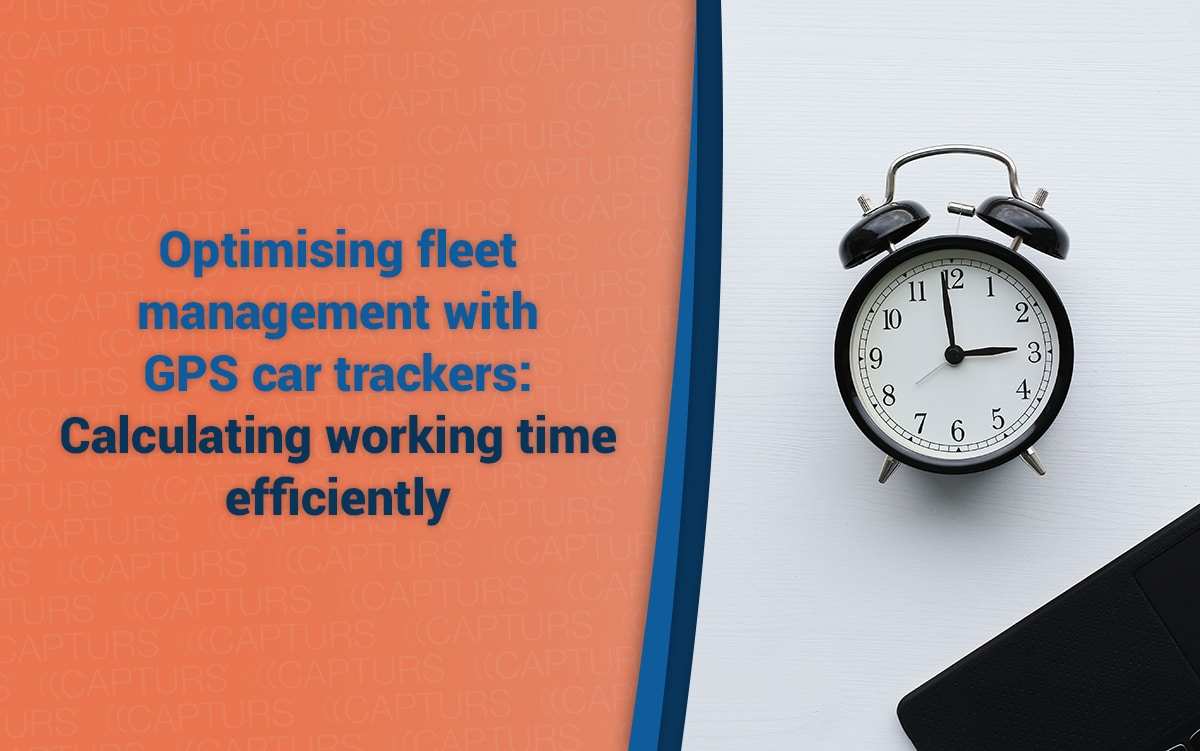Optimize fleet management with GPS car trackers: Calculate working time efficiently

Vehicle fleet management is a crucial issue for companies that depend on them to carry out their daily activities. It is therefore important to have efficient tools to monitor and track the movements of these vehicles, especially to calculate the working hours of employees.
The use of GPS trackers to calculate working hours is becoming more and more common. GPS trackers allow to follow in real time the location of the vehicles, which allows to calculate the starting and ending hours of work, as well as the effective working hours.
Working hours management is a crucial issue for companies because working hours have a direct impact on operating costs. It is therefore crucial to have reliable tools to calculate working hours accurately and efficiently. The use of GPS trackers allows to automate this calculation and to make it more accurate.
The objective of this article is to present how GPS trackers can be used to calculate the working hours of employees using fleet vehicles. We will describe the different steps to implement a GPS time tracking system, the benefits of this method, the associated costs and examples of companies that have successfully used GPS trackers to improve time management.
GPS trackers for the calculation of working hours
Operation of GPS trackers to follow the movements of vehicles
The operation of GPS trackers to monitor vehicle movements is based on the reception of GPS signals by the device. GPS trackers use GPS receivers to receive signals from GPS satellites orbiting the Earth. These signals contain precise location information, such as latitude, longitude and altitude.
GPS trackers use this information to determine the vehicle’s current position. Most GPS trackers send this information to a central server where it is stored and analyzed to create real-time tracking reports. Employees can access these reports via a mobile app or computer to track vehicle movements in real time.
GPS trackers can also use additional sensors, such as speed sensors, to collect additional data on vehicle movements. This data can be used to calculate actual work times by comparing vehicle positions to work start and end times.
It is important to note that for GPS plotters to work properly, vehicles must have a stable power supply to keep the plotter running. GPS plotters must also be installed in a secure location to prevent damage or theft.
In summary, GPS trackers allow real-time tracking of vehicle movements using GPS signals to determine current position. The data collected by GPS trackers is then used to create real-time tracking reports for fleet management and to calculate the actual working hours of employees.
Advantages of using GPS trackers to calculate working hours
The use of GPS trackers to calculate working hours has many advantages for companies that manage vehicle fleets. Here are some of the main advantages:
Accuracy of work time data: GPS trackers allow for real-time tracking of vehicle movements, allowing for highly accurate calculation of actual work times. This allows companies to better understand their employees’ driving habits and optimize routes to reduce travel time.
Improved productivity: GPS trackers allow companies to monitor vehicle movements in real time, which allows for better job planning and route optimization. This leads to improved employee productivity and savings in time and money.
Regulatory and Compliance: GPS trackers allow companies to track vehicle movements and calculate actual work times in accordance with regulatory standards. This allows companies to comply with regulatory requirements and avoid penalties.
Employee Tracking: GPS trackers allow companies to track vehicle movements and calculate effective employee work times and attendance in work areas. This allows companies to better understand their employees’ driving habits and take steps to improve their safety.
Vehicle tracking: GPS trackers allow companies to track vehicle movements and obtain information on vehicle usage, such as miles driven and travel times. This allows companies to better understand their vehicle usage and to plan necessary repairs and maintenance with a history of all vehicle trajectories.

Comparison of GPS trackers with other timekeeping methods
In fleet management, it is important to be able to calculate employee work time for productivity and regulatory compliance. There are several methods for calculating these times, but the use of GPS trackers is becoming increasingly common because of its advantages. However, it is important to compare GPS trackers with other methods to choose the best solution for your business.
Traditional methods of calculating work time include manually entering start and end times, or reporting work time on a paper or electronic form. These methods can be tedious for employees and can result in errors or omissions. In addition, these methods do not track vehicle movements and calculate work times in real time.
GPS trackers, on the other hand, track vehicle movements in real time and calculate work times automatically. The location data is transmitted to a fleet management system, where it is used to calculate work times and on-time performance. Employees do not need to manually enter their work hours, eliminating errors and omissions. In addition, GPS trackers can track vehicle movements and optimize routes, which can result in time and fuel savings.
It is important to note that GPS plotters are not the only time tracking tools available on the market. There are also electronic timekeeping systems, time management software and productivity monitoring systems. However, they do not have all the advantages of GPS trackers, including the ability to track vehicle movements.
In conclusion, the use of GPS plotters for timekeeping is becoming more common because of its advantages. However, it is important to compare GPS trackers with other methods to choose the best solution for your business.

Use of GPS tracker data to calculate work times
How location data is used to determine start and end times
The use of GPS trackers in fleet management allows for the collection of real-time location data. This data can then be used to calculate the working hours of drivers. To do this, location data is used to determine the start and end times of work.
When a vehicle is in motion, it regularly sends location data to the fleet tracking system. This data includes GPS position, speed, and other information about the vehicle and its driver. Using this data, it is possible to determine when a driver has started work and when he or she has finished.
For example, if a vehicle is in motion at a certain time, it may indicate that the driver is working. Similarly, if a vehicle is parked for a certain period of time, it may indicate a break or the end of the workday.
Using this location data, it is possible to accurately calculate the start and end times for each driver. This allows companies to better manage costs by ensuring that drivers do not work more hours than necessary, and to better manage risk by ensuring that drivers comply with laws and safety regulations. In addition, it allows the company to know if the vehicle is also being used outside of work hours.
Using GPS tracker data to calculate work times also allows companies to better plan activities around drivers’ work hours, maximize vehicle utilization and optimize routes to save time and money.

How driving data is used to calculate effective working times
Vehicle location is one of the most important aspects of using GPS trackers to calculate work time. Location data allows you to determine exactly where a vehicle is at any given time, which is essential for determining start and end times.
When employees start their workday, they can report their presence using the GPS tracker in their vehicle. The location data from this tracker will then indicate the location where the work began, which will help determine the start time of the work. Similarly, when employees finish their workday, they can report their departure using the GPS tracker, which will determine the time they finished work.
By using GPS tracker location data, employers can therefore have an accurate view of their employees’ start and end times, which is essential to effectively managing their workforce and ensuring compliance with legal working time standards.
Driving data is also crucial for calculating actual working hours with GPS trackers. This data includes information such as speed, acceleration, braking and turning, which can be used to determine distance traveled and time spent on the road.
Employers can use this data to calculate their employees’ actual work times by comparing the start and end times determined from the location data with the driving data. For example, if an employee spent a certain amount of time driving their vehicle, that would be considered actual work time.
How GPS tracker data can be used to automate the calculation of working hours
GPS trackers send information about the location and movements of vehicles to a centralized system. This system can then use this data to automatically calculate working hours.
To begin with, location data is used to determine the start and end times of work. For example, if a vehicle enters a defined geographic area at the start time of the workday, this can be considered the start of the workday for that employee. Similarly, if a vehicle leaves a defined geographic area at the end of the workday, it can be considered the end of the workday for that employee.
Next, the driving data is used to calculate the actual work times. Speed, stop and go information is used to determine how much time an employee spent driving, stopping for breaks, etc. This data can also be used to detect unauthorized overtime or idle time.
Using GPS trackers to automate the calculation of working hours has many advantages. First, it reduces human error in data entry. In addition, it saves time by eliminating the need to manually enter start and end time information. Finally, it provides more accurate and reliable time data, which can help managers make more informed decisions.

